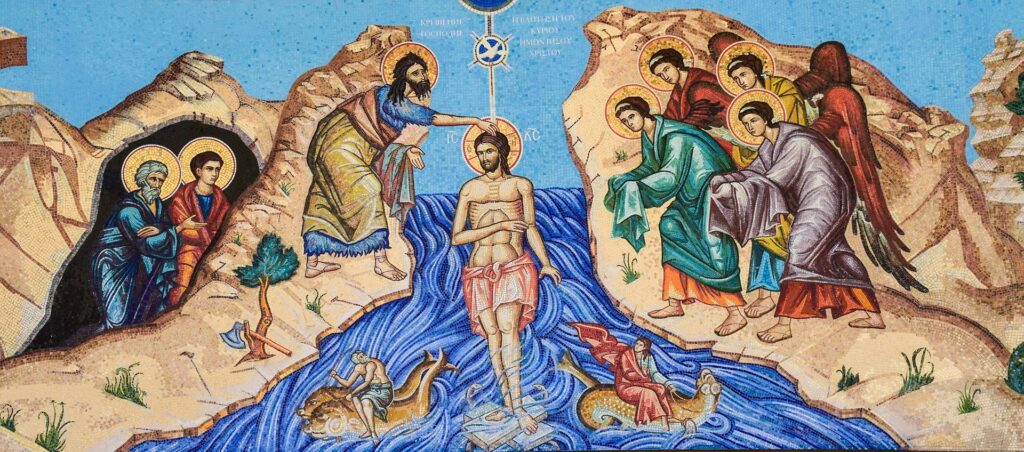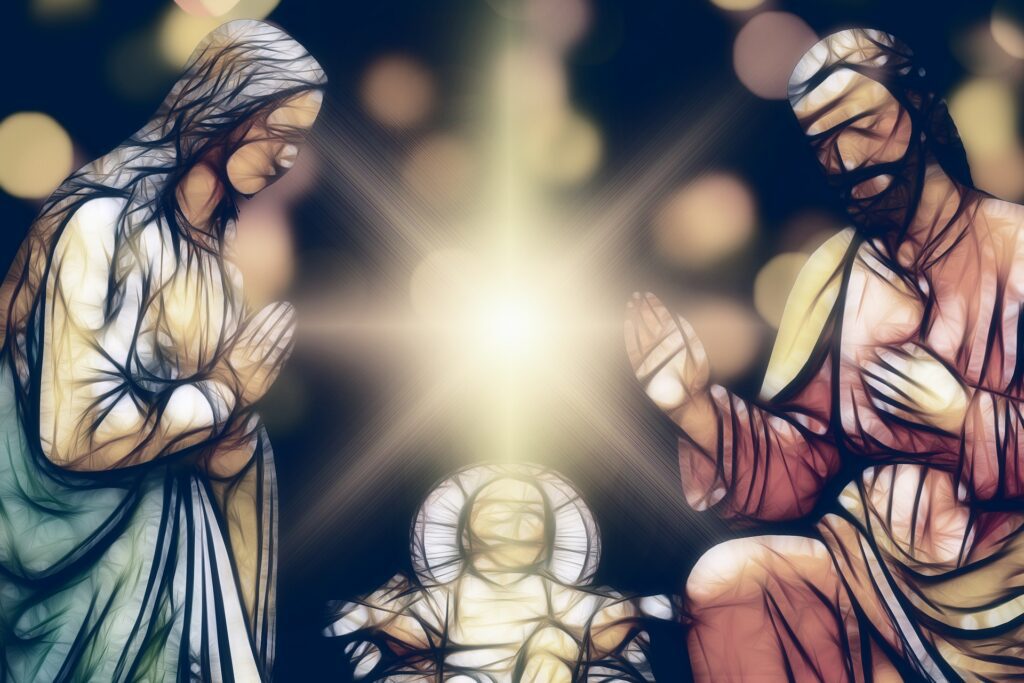This page may contain affiliate links, which means I may receive a commission from purchases made through links.
Do you remember your baptism? I sure do. At least, I remember my second one (don’t come at me, liturgical people).
My first baptism was at a young age, not long after I was led to Jesus in a kids church service. A few years later, I found myself rejecting God’s will for my life in middle school, but eventually, I came back to my faith in high school, and I sensed the Spirit of God leading me to ministry. I obeyed his voice and attended a highly immersive ministry training program.
In 2016, I had just gotten out of a serious relationship. Going into my senior year of Bible college, I decided to pursue God more seriously than ever before.
For three years I ignored the Spirit telling me to let go of this relationship. At the time, that was the most difficult decision I had ever made. We spent five years together, were close to each other’s families, and were planning our wedding before engagement. We did ministry together and had big plans to serve the Lord as a couple. Outwardly, things looked perfect, but our relationship consistently pulled my attention away from holiness and devotion to God.
When this relationship ended, I sensed God bringing me into a new season of zeal and passion for the Kingdom. One Sunday, the church we attended as a student body was doing baptisms. Though I hadn’t signed up, they had extra changes of clothes, and I spontaneously decided it was a good time to get dunked.
Nonetheless, I was baptized again. And at least this time I understood what was happening.
Or so I thought…
Jesus is Baptized
Today we look at a very well-known, yet very under-discussed, story of Jesus.
Matthew chapter 3 begins with John the Baptist (or Saint John the Forerunner), whom we have previously discussed, traveling around Judea, baptizing people in the Jordan. John would preach, telling people to repent, and when they chose to do so, he would baptize those who desired to confess their sins and turn away from them. He even taught them how to change their ways (see Luke 3:10-14).
To John’s surprise, Jesus comes to him to be baptized. Knowing who Jesus is, John does what makes the most human sense: He tries to convince Jesus that he is not worthy to do what he asked him to do. Listen:
“John would have prevented him, saying, ‘I need to be baptized by you, and do you come to me?’ But Jesus answered him, ‘Let it be so now, for thus it is fitting for us to fulfill all righteousness.’ Then he consented” (Matthew 3:14-15).
When I read this passage, I’m stricken by Jesus’ words. He says that he must be baptized “to fulfill all righteousness.” But what does this mean?
Christians throughout history have had many takes on what his baptism has to do with “all righteousness.” After all, the Son of God doesn’t need baptism for his own sake. John was baptizing other people for repentance from their offenses, a symbol of their washing away their spiritual “dirt.” But Jesus? What dirt had he acquired? This same John said of Jesus in another gospel record, “Behold, the Lamb of God, who takes away the sin of the world!” (John 1:29). So Jesus is the one who takes away our sin, not the one who sins. But he is baptized by John, who baptized for repentance.
Jesus Repents in Baptism
One interpretation of Christ’s statement here is that, in his baptism, he was actually repenting. And no, I don’t mean to contradict myself by insinuating that Jesus was a sinner. His repentance, in this view, is actually on behalf of sinners.
This seems to make sense in light of the precedent set by Daniel, the prophet. He confesses and repents of the sin of his people’s idolatry and rebellion against Yahweh, despite his being possibly the most blameless Israelite in Babylon (Daniel 9:3-19). And Saint Paul clearly says about Jesus that God “made him to be sin who knew no sin, so that in him we might become the righteousness of God” (2 Corinthians 5:21).
In other words, part of that “becoming sin” was repenting before God on our behalf, so that in Christ’s baptism, he would take our place as sinners, and we would take, in our union with him, his righteousness.
This is part of a larger understanding of Christ’s work on the cross as being a punishment in our place for our sin in order to give us the reward of righteousness.
Jesus Cleanses the Water
Another idea is that Jesus was actually cleansing the waters to set them apart for our future baptisms. This idea, while not necessarily going against the Scriptures, is not explicitly found inside then. It is spelled out more specifically by church fathers such as Saint Augustine and Saint Ambrose.
And this is not just about the waters of the Jordan where he was at the time. In the Ancient Near Eastern world, water was a symbol of chaos and the evil forces that cause it. There is a lot of mythology associated with demons and water. Ancient icons of this event show demons, snakes, scorpions, etc., being defeated by Jesus in the water. So according to this view, Jesus was not just being baptized on our behalf for sin, but he was actually accomplishing a victory over the powers of darkness, casting them out of the water as his own sinless and perfect body entered it, forever sanctifying any water used for baptism.
This particular view is usually found among those who view baptism as regenerative in some way, because baptismal waters regenerating the soul depends on the waters themselves being cleansed by God and then imparted with the power to cleanse.
Jesus is King
The next view sees Christ’s baptism as being the first of three steps to mirror the process Israelite kings went through to actually become the king.1
1. Kings Are Appointed by Ritual
This was true for David, Saul, and others who were anointed with oil in advance of their kingship to make it known that they are the next king. Jesus follows this pattern with his baptism, as immediately after he comes out of the water, the Spirit comes upon him (or anoints him), and the Father declares his Sonship (Matthew 3:16-17). The Father, being the Lord and King of Israel (and truly over the whole earth), makes it known that Jesus is the Heir to his throne.
2. Kings Prove Themselves in Battle
King David has a lot of wins in the books, particularly against the Philistines. But Jesus didn’t slay any of the Romans who oppressed his people. Instead, “God anointed Jesus of Nazareth with the Holy Spirit and with power. He went about doing good and healing all who were oppressed by the devil” (Acts 10:38). The victory Jesus won was spiritual. He fought off the forces of darkness by setting people free from demons, diseases, and death.
3. Kings Are Coronated
Again, we see this take place with David in 2 Samuel 5, where he is formally anointed as king of Israel, not just by prophetic declaration, but by the certainty of ceremony. David was not only supposed to be king; he was king. And Christ again mirrors this. When Jesus is led to to be crucified in Jerusalem, his sufferings directly mirror many common elements of coronation: the scarlett robe, the guards mocking and calling him King of the Jews as he is about to die, the crown of thorns, the procession through the city, and his being lifted up on the cross (Matthew 27:27-37).
So this pattern seems to make a lot of sense. Jesus is, of course, the King. When he sends out the disciples in the Great Commission, he says, “All authority in heaven and on earth has been given to me” (Matthew 28:18). So this pattern has prophetic significance. But before we come to any conclusions, we need to look at one more perspective.
Jesus is Israel
When Matthew writes his gospel, he uses the Greek word pléroó, or “fulfill,” a lot. Seventeen times in its various forms, to be exact. Most of its uses are related to Jesus fulfilling a specific prophecy in the Old Testament.
Take Matthew 2:15, for example. When Jesus was a baby, his family took him to Egypt to flee King Herod, who sought to kill him. Matthew refers to to Hosea 11:1, saying that Jesus’ journey into, and eventually out of, Egypt was a fulfillment of this prophecy, which he quotes: “Out of Egypt I called my son.” The full text of Hosea 11:1 actually says this: “When Israel was a child, I loved him, and out of Egypt I called my son.” Matthew, knowing Hosea refers to Israel, applies it to Christ. But why?
Matthew presents the story of Jesus as a reenactment of the story of Israel. Think about it: Pharaoh killed Israelite boys under 2 to prevent a Hebrew uprising in Egypt. Herod did the same in Bethlehem. Israel came out of Egypt as a new nation. Jesus came out of Egypt as a young boy. Israel went through the Red Sea into a 40-year wandering in the wilderness. Jesus went through baptism into 40 days of wandering.2 This is only just the start, but you get the point. And Jesus was faithful to God, righteous in every way that Israel was not. He is the perfection of Israel, the fulfillment of righteousness.
Based on this, we can see his baptism as one of many moments of perfect obedience to the Father, part of the story that shows him to be the true Vine, the true Israel, with which the blood Israelites and non-Israelites alike are united by faith (see John 15:1-6 and Romans 11:17-24).
Baptism is More Than a Ritual
This many perspectives in one place might seem a bit overwhelming; it does for me. I have summarized many centuries of interpretation, which I have learned over years of study. And I didn’t even provide an exhaustive list of ideas surrounding the baptism of our Lord. Yet the question remains: who has it right? And there doesn’t have to just be one answer.
As you may have noticed, most of these views have solid biblical precedent and support. Christ does take our place. Jesus does cleanse and set apart baptism for us. The Lord is our King. He is our true Israel. And he is our example.
This post is all about Jesus. All about what his baptism means for him, and by extension, for us. And based on the rich, mysterious theology present in his baptism, I am not convinced that our baptism is merely a symbol for us as it was for John’s disciples.
Saint Paul seemed to understand this. The apostle heard that believers in Ephesus had only received John’s baptism, and this was not enough for him. He had them baptized again in Christ (Acts 19:1-6). For many modern Evangelical Christians, the baptism of repentance would have been enough, and they would have just kept on going. But Paul considered baptism into the name of Jesus to be crucial enough that they had to do it on top of their baptism by John. And this further had something to do with his willingness to lay hands on them to be filled with the Spirit.
Open to Sacraments
I grew up (and still am) a Pentecostal. I’m a believer in a tradition that is deeply aware of the power of God’s Spirit. Pentecostals are open to God working miraculously or prophetically through any- and everything. But what I find interesting is that while we love to give people prayer cloths, anoint them with oil, or blow air on their foreheads, believing that something powerful happens when we attach our faith in God’s power and presence to something visual and concrete, we Pentecostals tend to be wary of the suggestion that something spiritual happens in the sacraments (or ordinances, as some prefer). But baptism is one of the few physical demonstrations of God’s work that we are commanded by Christ to perform. How much more powerful is our immersion into those sacred waters than a prayer cloth or a breath!
At some point, I will write in more detail about the sacraments, but for now, I leave you with this: Something changed from the baptism of John to the baptism of Christ. I do not claim to know the depths of the mystery of God’s work in baptism, but I am convinced there is truly a work being done. In those waters, I have seen people delivered from demonic oppression and filled with the Spirit. I have heard stories of physical healings and addictions forever broken off people’s lives in baptism. Perhaps on my journey, I may come to a more concrete understanding of what happens in the Spirit, or perhaps not. Either way, with every baptism we see, let’s look back on the baptism of our Lord with gratitude for how he has “fulfilled all righteousness” for us and for those we celebrate with.
Footnotes
*If you enjoyed this post please comment your thoughts down below and consider subscribing to receive updates about new posts.
- See Dr. Michael Heiser’s Naked Bible Podcast Episode 333: The Israelite King and Jesus as King for more information. ↩︎
- See my blog post, A Tale of Three Tests: Finding Strength in the Wilderness. ↩︎




This post is well done. It is eye-opening to read the message behind the message, so to speak. Thank you for showing some of the parallels between Christ’s life and Old Testament happenings; how He fulfilled the law.
SN: I definitely get why you had a second baptism, and I can see merit in doing so. Baptism doesn’t save anyone, but it is an act of obedience, and is symbolic of cleansing and anointing. For the person returning to Christ after living in sin, it can also represent a fresh start to, and for, that person. It can also demonstrate to the world that you have accepted new life in Christ.